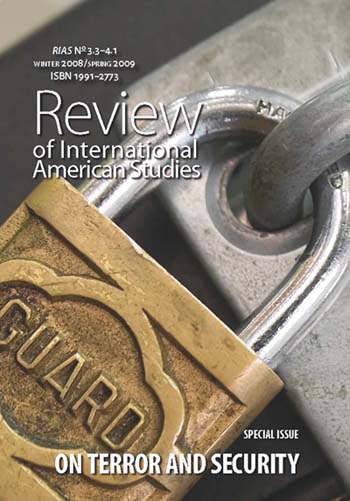‘The Days After’ and ‘the Ordinary Run of Hours’: Counternarratives and Double Vision in Don DeLillo’s "Falling Man"
‘The Days After’ and ‘the Ordinary Run of Hours’: Counternarratives and Double Vision in Don DeLillo’s "Falling Man"
Author(s): David BraunerSubject(s): Language and Literature Studies, Studies of Literature, Other Language Literature, Cultural Anthropology / Ethnology
Published by: Wydawnictwo Uniwersytetu Śląskiego
Summary/Abstract: The publication in 2007 of Don DeLillo’s fourteenth novel, "Falling Man", was keenly anticipated and then indifferently received. As many reviewers observed, DeLillo had already dealt in previous novels with the issues that 9/11 seemed to crystallize: international terrorism, the global impact of American politics and culture, the relationship between the media television—in particular—and the events on which it reports. Citing a number of examples (the Happy Valley Farm Commune in "Great Jones Street" (1973), the Radical Matrix in "Running Dog" (1978), Ta Onómata in "The Names" (1982)), John Leonard points out that terrorist groups are ubiquitous in DeLillo and argues that ‘some kind of 9/11 was always implicit’ in his work (Leonard, 2007: 1). Similarly, Andrew O’Hagan suggests that DeLillo’s ‘interest in the conjunction of visual technology and terrorism … put him on the road to having September 11 as his subject long before the events of that day happened’ (O’Hagan, 2007: 1). However, for O’Hagan the arrival of the event itself, rather than giving DeLillo the material he had been waiting for, has rendered him redundant. O’Hagan sees DeLillo as the victim of his own prescience, asking rhetorically: ‘ “What is a prophet once his fiery word becomes deed?” What does he have to say? What is left of the paranoid style when all its suspicions come true?’ (O’Hagan, 2007: 5, 6). This notion that DeLillo had somehow scooped himself is also implicit in the comments of Toby Litt, who announces that ‘[i]n "Mao II", DeLillo had already written his great 9/11 novel, long before the specific date and the event happened to come around’ (Litt, 2007: 1) and of David Cowart, who writes that ‘DeLillo has already produced, in "Mao II", the definitive novelistic treatment of terrorism centered in and emanating from the Near or Middle East’ (Cowart, 2003: 217).Unlike the others, Cowart’s remarks—in the concluding chapter of his book "Don DeLillo: The Physics of Language" (2003)—were made before the appearance of "Falling Man". So convinced is Cowart that anything DeLillo publishes after September 11th, 2001, must be a response to the events of that day, that he presses "Cosmopolis" (2003), the predecessor in DeLillo’s oeuvre to "Falling Man" and his first book to be published after the attacks on the towers, into service as an oblique 9/11 novel. He refers in his discussion of the novel to its ‘ 9/11-tinged atmospherics’ (211), claiming that ‘[a]lthough the action of "Cosmopolis" takes place in Manhattan a year and a half before the 9/11 terrorist attack, DeLillo depicts a city over which, as he and the reader know, a terrible event looms’ (210). Undaunted by the absence of any concrete allusions to 9/11, Cowart discovers in the narrative trajectory of "Cosmopolis" an implicit precognition of 9/11, so that the novel becomes a ‘brilliant … explor[ation]’ of ‘a proximate past from the never explicitly stated vantage point of post-9/11’, an ‘engagement’...
Journal: Review of International American Studies
- Issue Year: 3/2009
- Issue No: 3-4
- Page Range: 72-81
- Page Count: 10
- Language: English

